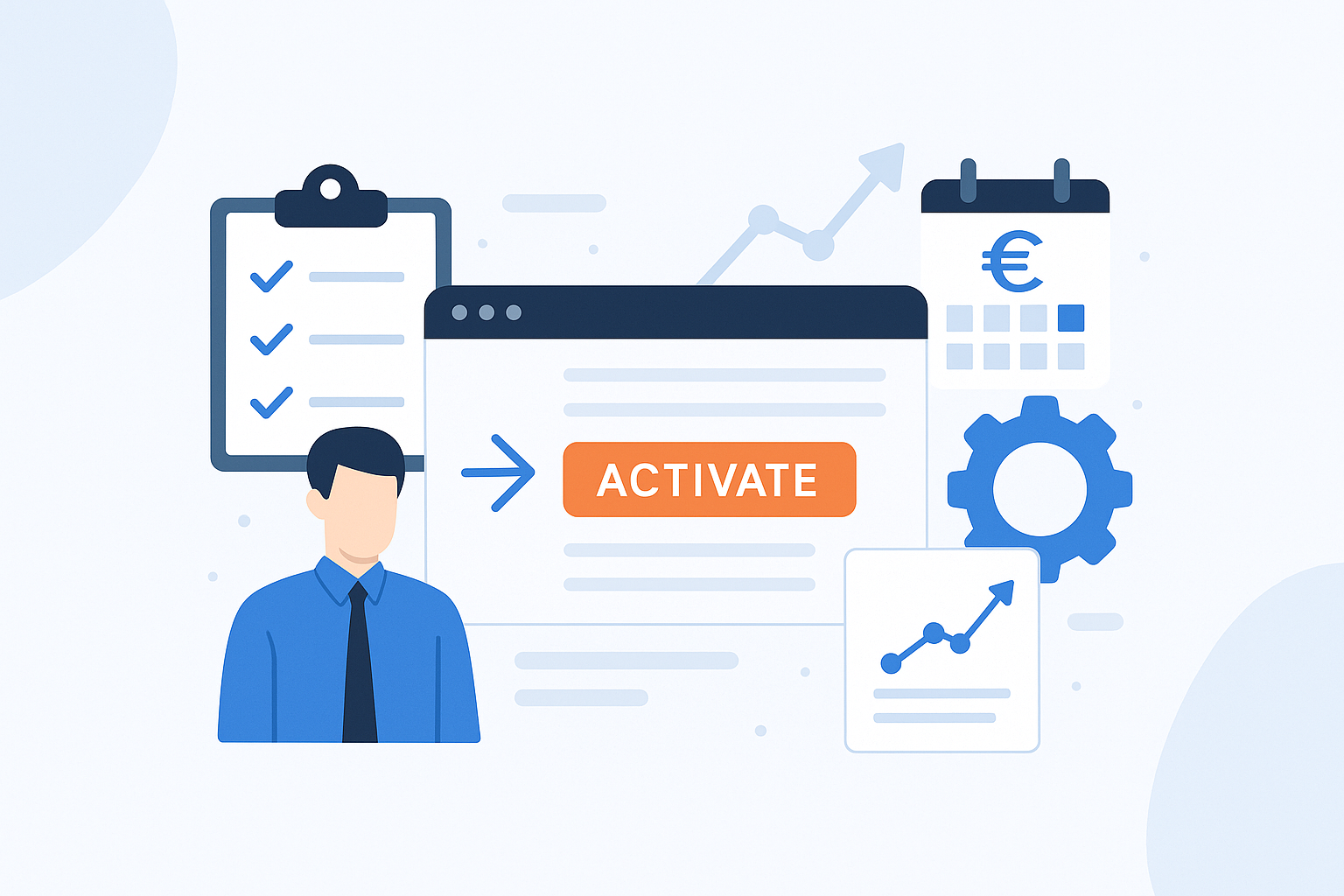Pour de nombreuses entreprises SaaS, la première interaction avec un client s'accompagne de coûts supplémentaires - intégration, configuration du compte, intégrations, voire formation. La facturation d'un frais d'installation permet de recouvrer ces dépenses tout en garantissant la clarté et la prévisibilité du prix de votre abonnement. Mais si vous ne les appliquez pas correctement, les frais de configuration peuvent être perçus comme un supplément caché et faire fuir les clients potentiels.
Voici comment facturer les frais d'établissement de la bonne manière.
1. Aligner les frais de mise en place sur les coûts réels
Les clients acceptent les frais d'installation lorsqu'ils en voient la valeur.
- Couvrir le travail d'intégrationLes services d'assistance technique et d'aide à la décision sont les suivants : migration des données, intégrations personnalisées ou assistance technique.
- Récupérer les coûts non récurrentsL'utilisation d'un système de gestion de l'information est très complexe : provisionnement des serveurs, contrôles de conformité ou formation spécialisée.
- Éviter les frais arbitrairesLes frais d'inscription : ne les ajoutez pas simplement en tant que frais supplémentaires, mais liez-les directement à une activité.
💡 Conseil : Réalisez un audit interne de votre processus d'accueil. Calculez le coût moyen de la mise en service d'un nouveau client et utilisez-le comme base pour vos frais de mise en service.
2. Communiquer la valeur en toute transparence
Les frais d'installation ne doivent pas être perçus comme une surprise. Expliquez-le clairement ce que les clients obtiennent en retour.
- Remplacer les étiquettes génériques telles que "frais d'installation" par des termes tels que Frais d'embarquement, Coût d'intégrationou Frais d'activation.
- Ajoutez une courte description : "Installation et configuration uniques pour que votre compte fonctionne sans problème".
- Afficher les frais sur les pages des produits, à la caisse et sur les factures sous la forme d'un poste séparé.
Lorsque les clients voient les frais expliqués, ils sont plus enclins à les accepter comme faisant partie de votre service professionnel.
3. Choisir le bon moment
Les entreprises de SaaS ont généralement deux options :
- Charge immédiate: Facturer les frais d'installation dès la création de l'abonnement.
- Avec le premier cycle: Ajouter les frais à la première facture récurrente.
Si votre processus d'intégration nécessite un travail initial avant le début de l'abonnement, il est judicieux de facturer immédiatement. Si votre période d'essai fait partie de l'expérience client, combinez les frais d'installation avec le premier cycle de facturation pour réduire les frictions.
4. Utiliser les frais de mise en place de manière stratégique dans la tarification
Les frais de mise en place peuvent soutenir votre stratégie d'acquisition :
- Remise ou exonération des frais pour les promotions → "Inscrivez-vous ce mois-ci, sans frais d'inscription !"
- Regrouper les services d'installation avec les services premium → l'embarquement est gratuit pour les plans d'entreprise.
- Segmentation par type de client → facturer des frais de mise en place pour les comptes complexes, mais faire en sorte que les clients débutants n'aient pas de problèmes.
S'ils sont bien gérés, les frais d'établissement peuvent augmenter les recettes tout en vous donnant la possibilité d'expérimenter des incitations tarifaires.
5. Suivi et optimisation des performances
Ne vous contentez pas de l'installer et de l'oublier. Examinez l'impact des frais de mise en place :
- Taux de conversion: Les prospects s'arrêtent-ils à la caisse ?
- Valeur de la durée de vie du client (CLV): La facturation d'avance réduit-elle le taux de désabonnement ou fait-elle fuir les clients à forte valeur ajoutée ?
- Composition des recettes: Dans vos analyses, séparez le revenu des frais d'installation du MRR/ARR récurrent.
PayRequest suit automatiquement les frais de mise en place dans les factures, les rapports et les analyses de revenus, ce qui permet de mesurer facilement leur impact.
Exemple : Les frais de mise en place du SaaS en action
- Produit: Plan professionnel - 29,99 €/mois
- Frais de mise en place: Frais d'intégration - €99.00
Le client paie à l'inscription :
- Initial : €99.00 + €29.99 = €128.99
- Mensuel : €29.99
Clair, transparent et axé sur les valeurs.
Frais de mise en place de PayRequest
Les frais d'établissement ne servent pas seulement à couvrir les coûts, ils servent aussi à présenter votre service comme une valeur ajoutée dès le premier jour. Lorsque vous les alignez sur un véritable travail d'intégration, que vous les communiquez clairement et que vous en mesurez l'impact, les frais de mise en service deviennent un outil permettant de renforcer à la fois votre chiffre d'affaires et vos relations avec les clients.
Avec PayRequest, vous pouvez configurer des frais de mise en place pour tout produit ou abonnement, personnaliser le nom et la description, et décider exactement du moment où ils sont facturés, ce qui vous donne un contrôle total sur votre stratégie de tarification.

